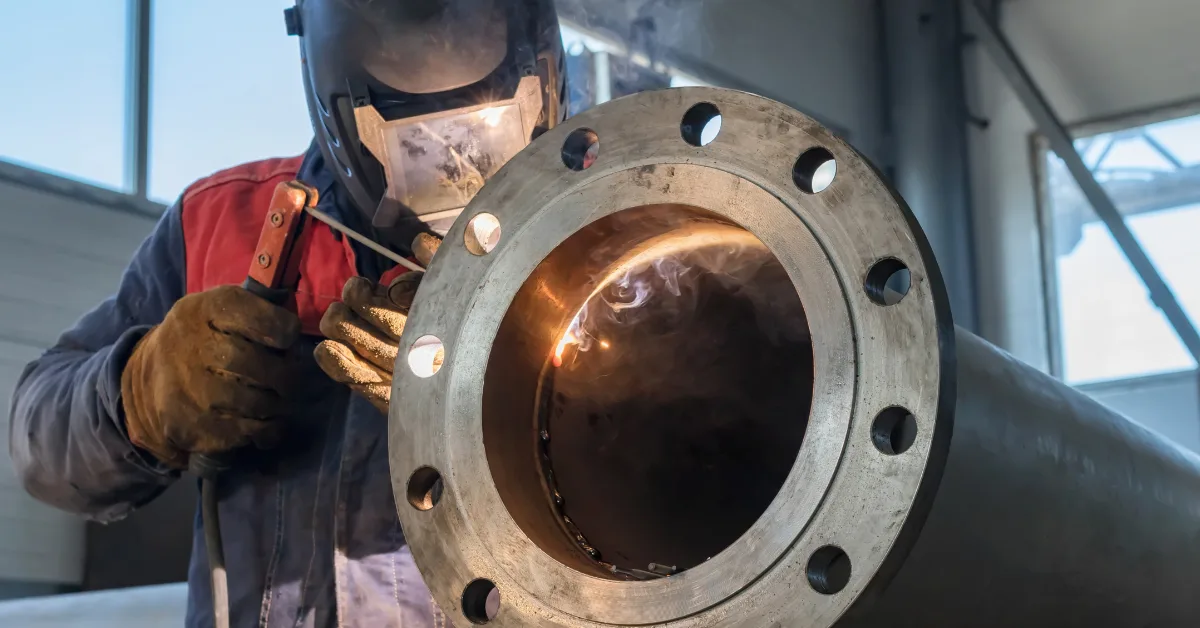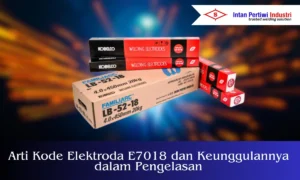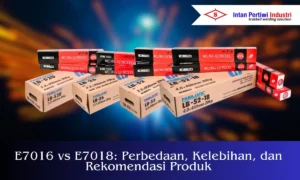A practical guide to calculating welding wire requirements for steel pipes. Learn the formulas, estimates, and tips for selecting the best pipe welding wire.
Pipe welding is a job that demands high precision, both from a technical and material planning perspective.
One important aspect that is often overlooked is calculating welding wire requirements. If calculations are not accurate, material can be under- or over-produced, ultimately increasing project costs.
This article will discuss how to calculate welding wire requirements for pipes using simple steps, including technical factors that must be considered, and recommendations for the best welding wire for pipe applications.
Table of Contents
ToggleWhy is it important to calculate the welding wire requirements for pipes?
Calculating welding wire requirements for pipes isn't just a formality. This calculation impacts the overall efficiency of the project.
By calculating the needs from the start, the team can ensure that the stock of welding wire is appropriate for the number of joints to be worked on.
Furthermore, accurate calculations help avoid the risk of running out of materials mid-construction. In large projects like oil and gas pipeline construction, delays due to material shortages can impact the work schedule, add costs, and even contract penalties.
Calculating welding wire requirements is also important to make realistic cost estimates in the early stages of a project.
Before calculating the welding wire requirements for pipes, first understand the function of welding electrodes because the type of coating affects the deposit rate, arc stability, usage efficiency, and calculation accuracy in the field.
Factors Affecting Welding Wire Requirements for Pipes
Pipe Diameter and Thickness
The larger the diameter and thickness of the pipe, the more weld metal is required to fill the joint.
For thin-walled pipes, relatively less welding wire is required, while thick-walled pipes require a larger amount of welding wire to ensure strong joint penetration and perfect integration.
Types of Pipe Welding Joints and Welding Positions
The type of connection also plays a significant role. Butt joints typically require more welding wire because they must fill the bevel between the two pipes. Fillet joints tend to use less wire. The welding position also plays a role.
Flat position welding is generally more efficient, while vertical or overhead welding requires more difficult control so wire consumption can be higher.
Process Efficiency and Welder Skill
Welder skill cannot be ignored. Experienced welders are able to maintain efficient wire usage with minimal spatter and consistent weld results.
Conversely, less skilled welders can produce more waste. Furthermore, welding machine efficiency and current parameter settings also determine the optimal use of welding wire.
Basic Formula for Calculating Welding Wire Requirements for Pipes
Calculating the welding wire requirements starts from calculating the volume of welding metal that must be filled, then converting it into the weight of the welding wire.
Estimation of Weld Volume in Pipe Connections
The weld volume can be calculated by multiplying the pipe circumference, pipe thickness, and the bevel factor. The pipe circumference is calculated using the formula π x OD, where OD is the pipe's outside diameter. The bevel factor typically ranges from 1.2 to 1.5, depending on the bevel angle used.
For example, a pipe with an OD of 200 mm and a thickness of 10 mm has a circumference of 628 mm. If the bevel factor is 1.2, the required weld volume is 628 x 10 x 1.2 = 7,536 mm³.
Convert Weld Volume to Welding Wire Weight
The volume obtained is then converted into the weight of the welding wire by multiplying the weld volume by the specific gravity of the steel, which is approximately 7.85 g/cm³.
From the example above, a volume of 7.536 mm³ is equal to 7.536 cm³. Multiplying 7.536 x 7.85 equals approximately 59 grams of welding wire for one joint.
If there are 100 connections, the total welding wire requirement is 5.9 kg. This figure must be factored in for waste to achieve more realistic results.
How to Calculate Welding Wire Requirements for Pipes
Calculating the welding wire requirements for pipes is an important step before starting welding work, whether in construction projects, the oil and gas industry, or fabrication.
With precise calculations, welders and engineers can estimate how much welding wire is needed, so that material procurement is more efficient and there is no waste.
1. Determine the parameters of the pipe to be welded
Some basic data to know:
Outside diameter of pipe (OD – Outside Diameter)
Pipe wall thickness (t)
Length of the joint to be welded (L)
Connection type → butt joint, fillet joint, or bevel.
This parameter will determine the volume of weld metal that must be filled.
2. Calculate the Volume of Welding Metal Required
General formula
Pipe circumference: C = π × OD (mm)
Weld volume: V = C × t × k (mm³)
Information
OD = outside diameter / outside diameter of the pipe (mm)
t = pipe thickness (mm)
k = bevel factor (≈ 1.2 – 1.5, depending on bevel angle & gap)
Calculation example
OD = 200 mm
t = 10 mm
Take k = 1,2
Step:
C = π × OD = 3,14 × 200 = 628 mm
V = C × t × k = 628 × 10 × 1,2 = 7.536 mm³
Result: Weld metal volume ≈ 7,536 mm³ per joint
(= 7.54 cm³ when converted to cm³)
Note: The k value increases if the bevel angle is larger or there is a root gap; use a range of 1.2–1.5 depending on the seam design.
3. Convert Volume to Weight of Welding Wire
General formula
Wire weight (grams) = Weld volume (cm³) × Metal specific gravity (g/cm³)
For carbon steel, take ρ ≈ 7.85 g/cm³.
Unit conversion
1 cm³ = 1.000 mm³ ⇒ V(cm³) = V(mm³) ÷ 1.000
Example (continued from previous)
Weld volume: 7,536 mm³
Convert to cm³: 7,536 ÷ 1,000 = 7,536 cm³
Specific gravity of carbon steel: 7.85 g/cm³
Calculate the weight per joint:
Weight = 7.536 × 7.85 = 59.16 grams
(≈ 59 grams per connection)
If there are 100 connections:
Total ≈ 59.16 g × 100 = 5,916 g = 5.92 kg
(≈ 5.9 kg welding wire)
Practical note: the above figures are theoretical volumes. In practice, requirements may be higher depending on deposition efficiency (SMAW ~60–70%, GMAW/FCAW ~80–90%), spatter, and grinding. If necessary, multiply the final result by the appropriate efficiency factor.
4. Add Waste Factor
In practice, there are always losses due to spatter, slag, or welding errors. This usually adds 10–20% of the total requirement.
From the example:
5.9 kg × 1.15 (waste 15%) = ± 6.8 kg welding wire
5. Adjust to the type of welding wire
For root pass → usually use cellulose wire (e.g. KOBE-6010, KOBE-7010S).
For fill & cap pass → use low hydrogen (e.g. LB-52, LB-52-18, LB-52U).
With this combination, the calculation of requirements can be divided according to the type of welding wire per layer.
Recommended Welding Wire Types for Pipes
The following are several types or products of welding wire for pipe welding needs, namely:
1. Kobe Steel LB-52 Welding Electrodes
LB-52 welding electrodes is known as a low-hydrogen electrode with good arc stability and smooth weld results. This electrode is suitable for carbon steel pipes with general industrial standards.
2. Kobe Steel LB-52-18 Welding Electrodes
LB-52-18 welding electrodes provides high toughness and low diffuse hydrogen content, making it an ideal choice for pipes with crack resistance requirements.
3. Kobe Steel LB-52U Welding Electrodes
LB-52U welding electrodes is widely used in the oil and gas industry and pipeline projects that require international welding standards. This electrode is specifically designed for root to cap passes with consistent joint quality.
4. KOBE-7010S Welding Electrodes
KOBE-7010S welding electrodes is the best choice for root passes with the vertical down technique. This electrode has deep penetration and thin slag, thus speeding up pipe welding.
5. KOBE-6010 Welding Electrodes
KOBE-6010 welding electrodes is very popular for use in carbon steel pipe welding, especially for root passes. Its sharp arc and strong penetration make it a mainstay in the field.
Conclusion
Calculating the welding wire requirements for pipes is a mandatory step before the project starts.
By taking into account the pipe diameter, thickness, connection type, and bevel factor, the welding wire requirement can be calculated more accurately. Don't forget to add a waste factor for a more realistic estimate.
Choosing the right welding wire is also crucial. Use proven products like the LB-52, LB-52-18, LB-52U, KOBE-7010S, and KOBE-6010 series.
With proper calculations and selection of appropriate products, pipe welding projects can be carried out efficiently, safely, and meet quality standards.
FAQs
1. How to calculate the welding wire requirements for pipes?
Welding wire requirements are calculated by finding the volume of weld metal based on the pipe circumference, wall thickness, and bevel factor. This volume is converted to weight by multiplying the specific gravity of the steel and then adding a waste factor of around 10–20 percent to account for spatter and other losses.
2. What are the factors that influence the need for welding wire on pipes?
The main factors include pipe diameter and thickness, connection type (butt joint or fillet joint), welding position, welding machine efficiency, and welder skill. The thicker the pipe and the more complex the position, the greater the welding wire requirement.
3. Why is it necessary to add a waste factor in the calculation of welding wire?
In welding practice, there is always some material loss due to spatter, slag, or welding errors. Adding a waste factor of 10–20 percent makes estimating wire requirements more realistic and prevents material shortages during the process.
4. What type of welding wire is suitable for pipe welding?
For root pass, cellulose wires such as KOBE-6010 and KOBE-7010S are usually used. Meanwhile, for fill and cap pass, low hydrogen electrodes such as KOBELCO LB-52, LB-52-18, and LB-52U are more suitable. The choice of wire type must be adjusted to project standards and pipe specifications.
5. How much welding wire is needed for one pipe connection with a diameter of 200 mm and a thickness of 10 mm?
With a circumference of 628 mm and a bevel factor of 1.2, the weld volume is 7,536 mm³ or 7.536 cm³. Multiplying the steel's specific gravity of 7.85 g/cm³ yields approximately 59 grams of wire per joint. For 100 joints, the total is approximately 5.9 kg before adding the waste factor.







